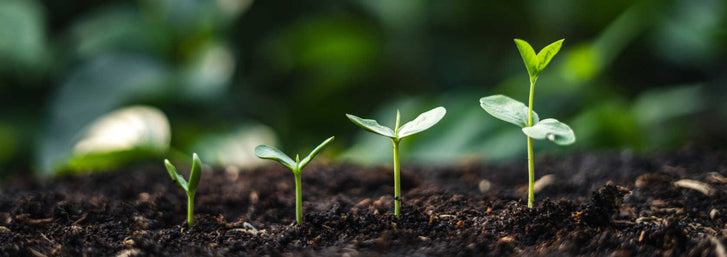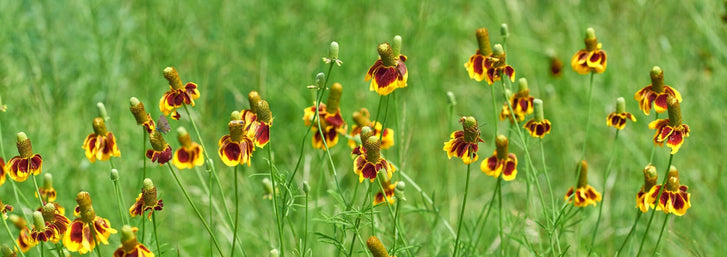
Kat Jones

Sprouts & Wheatgrass Production - Summer Tips
I was especially in love with spring this year. Rain and cool weather were so plentiful that I began to believe Utah would soon become a paradise of green forever. Nevertheless, this week things started to heat up and summer arrived. What to do? What to do? May I suggest we follow this admonition:
“To be interested in the changing seasons is a happier state of mind than to be hopelessly in love with spring.”
--George Santayana
With consideration to these wise words, I present to you a few insider tips for growing wheatgrass and sprouts in the hot summer months.
Every summer we get calls from new growers who have successfully grown sprouts and or wheatgrass during the winter months but begin having trouble when the weather begins to warm up.
One wheatgrass caller reported: My grass only grows up 4 inches. It looks beautiful for a few days but never gets over 4 inches and then it falls over dead!
Some questions we might ask?
1. What is the temperature in your house?
2. Have you placed the flat of grass in front a hot window?
How we might troubleshoot:
The root system of wheat or barley is very delicate and subject to heat. How do you know if your wheat is getting too hot? Pull up the root system and look underneath. If it has brown spots or the entire root system has turned brown, then your grass got too hot and the root system rotted. You will need to start over with a new batch. Wheatgrass and barleygrass both like to grow in a very cool area. Also, it is important to water your grass thoroughly once a day until it drips from the bottom. Don’t just spray it with a water bottle. The roots need lots of water. If you have a fairly hot house, you can water with ice water or try putting your grass inside the fridge during the hottest part of the day. It won’t grow as fast, but this helps prevent rot and mold.
Sometimes grass gets mold when it is extremely warm. One thing that can be done in the summer is direct a slow fan towards your grass. This cools it and also dries up any mold spores. Another concern can be fruit flies. Sometimes they come from soil that is composted with fruit. Get a good forest based organic compost or potting mix with no compost. A fan often helps with fruit flies as well.
Another recommendation is to grow Barleygrass, it can take a little more heat before molding. It is extremely high in organic sodium and the juice replenishes your sodium lost during the hot months. Many people find it very cooling and also helpful if one tends to be arthritic. Barley juice is very bitter, but seems to be more refreshing in the summer than wheatgrass.
A sprout grower reported: My broccoli sprouts spoil so quickly and don’t grow. They smell stinky!
Sprouts are also very delicate and sensitive to heat. They like very cool temperatures. Water with ice cold water or put sprouts in the fridge during the hot part of the day (especially if your house is much above 70 degrees Fahrenheit). Keep as cool as possible and rinse often 2-3 times a day. Always be sure to throw away sprouts that smell like they have spoiled.
Any other problems? Call us. Let your summer growing be even more prolific and gratifying than you could have imagined!
Leave a comment
Your email address will not be published. Required fields are marked *
0 Comments
No Comments yet! Be the first to start a conversation
Further Reading

Reviewing the Aquatree Garden: A True Leaf Market Experience
The AquaTree Garden is an innovative growing experience! This nifty appliance allows you to grow leafy greens, microgreens, herbs, large sprouts, and vegetable starts (like tomatoes) all at once! When it comes to indoor gardening, there is no question ...

Ashleigh Smith
2024-04-225 min read0
Parasitoid Wasps: A Beneficial Insect in the Garden
Written By Lara Wadsworth There are estimated to be around one million different species of parasitic wasps worldwide. In fact, most wasps are parasitic, which means they live on or in a host at the host's expense. For common garden pests like aphids, ...

Ashleigh Smith
2024-04-226 min read0
Succession Planting: The Key to a Continual Harvest
Do you find yourself harvesting large amounts of any given vegetable from your garden all at once? There is a solution! The practice of succession planting, or planting in segments over a period of time, allows you to harvest root vegetables, leafy gre...

Ashleigh Smith
2024-04-223 min read1
10 Natives of the Southwest USA for Pest Control
Written By Lara Wadsworth The Southwestern United States is a region incredibly unique to the rest of the country. The hot, dry weather can be challenging for plants and animals to thrive without additional help. That is why gardening with natives can ...

Ashleigh Smith
2024-04-157 min read0



